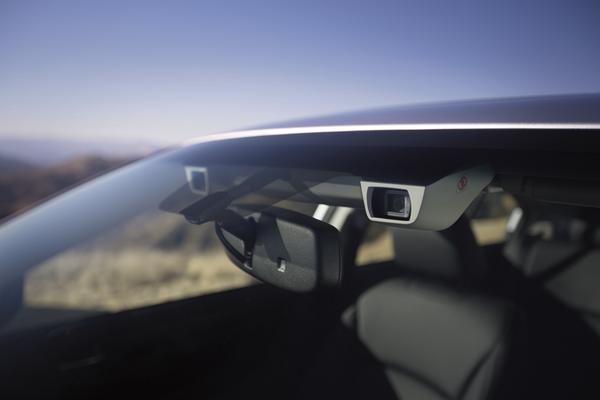Subaru’s EyeSight crash avoidance system reduced crashes with bicyclists traveling parallel to the road but was only modestly successful in reducing crashes with bicycles overall, a new study from the Insurance Institute for Highway Safety (IIHS) revealed.
The system, which has been available for a number of years, has recently been updated to enhance its ability to recognize cyclists in the most common crash scenario.
EyeSight is a suite of advanced driver assistance features that includes automatic emergency braking (AEB) and other technologies enabled by two cameras mounted behind the windshield.
It’s one of the earliest crash avoidance systems capable of preventing bicycle crashes, according to IIHS, though its early generations were only designed to detect bicycles traveling in a parallel path to the vehicle.
The system reduced parallel crashes by 29 percent but had only a minor impact on crashes with bicyclists overall, the IIHS study found.
“It’s promising that these early versions of EyeSight prevented crashes with bicycles traveling parallel to the road, but to have a meaningful impact, AEB systems also need to be able to prevent crashes with bicycles that are crossing in front of the vehicle,” said Jessica Cicchino, vice president of research at the Institute and the author of the study.
Previous IIHS research indicates that AEB reduces police-reported rear-end crashes with other motor vehicles by 50 percent. Another study showed systems that can detect pedestrians reduce those crashes by 27 percent — though early versions didn’t work well at night.
AEB designed to avoid bicycles has been slower to take off, despite statistics indicating 1,000 bicyclists were killed in motor vehicle crashes in 2021, a 50 percent increase since 2010.
Cicchino compared bicycle crash rates for Subaru models with EyeSight with crash rates for the same models without the system across 16 U.S. states over 2014-2020.
The equipped Crosstrek, Forester, Legacy, Outback, Impreza and WRX models were all outfitted with the first or second version of the EyeSight system, designed only to prevent crashes with bicycles traveling in a parallel path to the vehicle.
As expected, the systems were better at preventing the parallel crashes they were designed to avoid than crashes of other types, the research found.
Rates of police-reported parallel crashes were 29 percent lower for vehicles equipped with EyeSight than for unequipped vehicles.
“Perpendicular crash rates and overall crash rates were 5 percent and 9 percent lower for equipped vehicles, respectively, but neither of those reductions was statistically significant,” the report stated.
Crossing crashes account for the majority of bicycle crashes in the U.S. and Europe, according to past research conducted by IIHS and others.
Parallel crashes are overrepresented among those where the bicyclist is killed, but Cicchino cautioned that her study doesn’t provide a clear indicator of EyeSight’s ability to prevent those types of fatal crashes, where high speeds and other circumstances could affect the system’s performance.
EyeSight’s third generation, designed to prevent both crossing and parallel crashes, is currently available on the 2022 Forester and WRX in the U.S. market.
The 2023 Ascent, Legacy and Outback also have the new version, as well as a third camera that expands the system’s field of view, IIHS reported, noting the wider scope could allow the system to detect crossing bicyclists sooner.
“These technologies are fantastic, but it will be a long time before every vehicle in the fleet is equipped with such a system,” Cicchino said. “That’s why we need things like better roadway lighting to help drivers to see cyclists at night as well as more separated bike lanes and other infrastructure improvements that we know reduce crash risk.”





















 Why Insurance Telematics Integrations Fail
Why Insurance Telematics Integrations Fail  Chubb, The Hartford, Liberty and Travelers Team Up on Surety Tech Co. Launch
Chubb, The Hartford, Liberty and Travelers Team Up on Surety Tech Co. Launch  Trump Signs Order Seeking to Limit State-Level AI Regulation
Trump Signs Order Seeking to Limit State-Level AI Regulation  Aon Adds to List of Brokers Suing Howden US for Alleged Poaching, Theft
Aon Adds to List of Brokers Suing Howden US for Alleged Poaching, Theft 